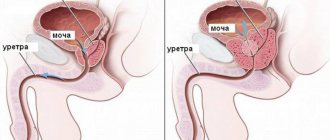Release form and composition
Janine is prepared in pill form for oral (oral) administration. They are white in color, round in shape and have a smooth surface. The pill contains 2 main active ingredients, which include ethinyl estradiol (0.03 mg in 1 pill) and dienogest (2 mg in 1 pill). Janine's dragees also contain auxiliary components, which include:
- Potato starch.
- Lactose monohydrate.
- Magnesium stearate.
- Talc.
- Dextrose.
- Sucrose.
- Gelatin.
- Macrogol 3000.
- Calcium carbonate.
- Titanium dioxide.
- Wax.
Janine's dragees are packaged in blister packs of 21 pieces. The cardboard pack contains one (21 tablets) or three (63 tablets) blisters and instructions for use of the drug.
Reviews
The contraceptive is considered highly effective according to both doctors and women. Correct implementation of the attached instructions guarantees reliable protection against unwanted conception and stabilization of the monthly cycle.
Negative reviews are associated with side effects, and in rare cases, with pregnancy. Unwanted conception is more often registered with improper use of the drug, frequent skipping of pills. In the video, instructions for using birth control pills Janine:
pharmachologic effect
Due to the presence of ethinestradiol and dienogest as the main active ingredients, Janine dragees, when used correctly, have a contraceptive effect, which is to prevent the development of unwanted pregnancy in a woman. The main biological mechanism of action of the active substances is the suppression of the ovulation process (the release of a mature egg from the ovary) and an increase in the viscosity of the cervical mucus, which prevents the further passage of sperm. Dienogest has antiandrogenic activity, so it improves the blood lipid profile (reducing the level of low-density lipoproteins, which contain large amounts of cholesterol) and reduces the severity of acne. The contraceptive effectiveness of Janine pills is reflected in the Pearl index, which, when taken correctly, is less than 1.0. If you skip or take the pills irregularly, the Perl index may decrease. Regular use of Janine pills helps normalize the menstrual cycle and reduce the pain of menstruation (algomenorrhea).
After taking Janine tablets orally, the active substances are absorbed into the blood from the intestinal lumen. They are evenly distributed in all tissues of the body. These compounds are metabolized in the liver to form breakdown products, which are excreted primarily in the urine.
Contraceptive hormones: types and effects
Various hormonal drugs, including oral contraceptives, such as Zhanine, with long-term use normalize the menstrual cycle, improve ovarian function, treat the uterine organs and, most importantly, prevent the formation of new endometrial tissue growths.
Today, a positive effect in the treatment of a disease such as endometriosis is provided by medicinal methods of using such hormonal drugs as:
- The antiprogestin series (which includes danazol and similar analogs, as well as mifepristone) are very effective, but have several side effects with long-term use, especially if you take the drug for the treatment of endometriosis. For example, such as weight gain, decrease in the volume of the mammary glands, the occurrence of edema and even cases of depression;
- GnRH agonists (active substances buserelin, as well as drugs based on goserelin) can cause resorption of the patient’s bone tissue if the drug is taken for a long time - to treat a disease such as endometriosis. And, as a result, it leads to the elimination of endometriosis, but also to the development of menopausal syndrome earlier than the deadline set by nature;
Contraceptive (using hormones - estrogen, in gestagenic compounds, for example Yarina, Visanne or the combined drug "Zhanine"). The use of gestagens began back in the distant 50s of the last century. Today, side effects during the use of these drugs in the treatment of endometriosis, according to research, are less pronounced, which is why the treatment of endometriosis by Zhanin has become widespread among young women. Because it does not have such accompanying negative effects as, for example, when taking Yarina or Visanne for the treatment of endometriosis.
Contraindications for use
Taking Janine pills is contraindicated in a number of pathological and physiological conditions of the woman’s body, which include:
- Individual intolerance to any of the components of the drug.
- Thrombosis (a condition characterized by increased formation of blood clots in the lumen of arteries or veins) or thromboembolism (migration of a blood clot in the vascular bed) at the time of starting the drug or suffered in the past.
- Diseases or pathological processes in the body that precede thrombosis, including transient ischemic attacks, acute cerebrovascular accidents, hypertensive crisis.
- Presence of risk factors for the development of thrombosis or thromboembolism (presence of an artificial heart valve, genetic predisposition).
- Migraine (severe paroxysmal headache) with the presence of focal neurological symptoms, including the presence of attacks in the recent past.
- Decompensated diabetes mellitus type 1 or 2 with the development of vascular complications.
- Volumetric surgical intervention with a long postoperative period and low motor activity of the woman.
- Uncontrolled increase in systemic blood pressure (arterial hypertension).
- Acute or chronic pancreatitis (inflammation of the pancreas) with increased levels of triglycerides (fats) in the blood.
- Severe liver pathology with impairment of its functional activity (the drug may be prescribed after normalization of laboratory liver parameters), malignant or benign liver tumors.
- The presence of malignant hormone-dependent oncological processes, including localization of the tumor in the organs of the reproductive system or mammary glands, the drug is also contraindicated if such tumors are suspected.
- Uterine bleeding of unknown origin.
- Pregnancy (including suspicion of its presence) and the period of breastfeeding.
- Smoking in women, especially over 35 years of age.
Before you start taking Janine tablets, you must make sure that there are no contraindications.
Janine - side effects and overdose
In most clinical cases, Janine is tolerated quite well, adapting imperceptibly in the body. However, you should not relax in advance, since side effects are also possible. Thus, the digestive organs can “react” with nausea and vomiting, the reproductive system with spotting vaginal discharge, the endocrine system with soreness and heaviness of the mammary glands, and the nervous system with mood swings, migraine attacks and depression.
If the daily doses of Janine are too high, an overdose is possible, which is accompanied by vomiting, diarrhea and nausea, which also does not exclude the appearance of spotting and bloody discharge. Treatment is symptomatic, and there is no targeted antidote.
Directions for use and doses
Dragees Janine are taken orally whole, without chewing and with a sufficient amount of water. They must be taken once a day, at approximately the same time, in the order indicated on the blister for 21 days. Then the woman takes a break of 7 days, during which menstrual bleeding begins (usually on the 2nd day after taking the last pill). The next blister must be taken after a seven-day break. The regimen for taking Zhanine pills also differs depending on several factors (the use of other contraceptives before starting to use Zhanine pills):
- When switching from other oral contraceptives, after using a vaginal ring or transdermal patch, taking Janine tablets should be started after a 7-day break after a contraceptive with 21 tablets or tablets in a patch, or after taking the last inactive tablet of a drug with 28 tablets in a blister. After removing the vaginal ring or removing the transdermal patch, taking Janine tablets should be started immediately the next day.
- When switching from oral contraceptives, which contain only gestagens (injectable forms of drugs, “micropilis”, implant, intrauterine device containing gestagen), taking Janine tablets begins from the moment of removal of the intrauterine device or implant, before the next injection of a parenteral drug or on the next day after finishing taking the micropil. In this case, within a week after starting to take Janine tablets, it is advisable to additionally use a barrier method of contraception (condoms).
- After an artificial termination of pregnancy (abortion) in the first trimester of pregnancy, treatment must begin immediately after the abortion procedure.
- After pregnancy or an abortion in the third trimester of pregnancy, it is recommended to start taking Janine tablets on the 28th day after pregnancy or abortion. If the drug is started several days later, it is recommended to use a barrier method of contraception for an additional week.
A missed dose of Janine's pills is accompanied by a decrease in contraceptive protection and an increase in the likelihood of pregnancy. If such a delay in taking is less than 12 hours, then a decrease in contraceptive protection does not develop, the missed pill must be taken as soon as possible, and the next pill must be taken at the usual time. If the delay exceeds 12 hours, the contraceptive protection is reduced, and it is necessary to be guided by the fact that the absence of taking the drug should not exceed 7 days, then to establish sufficient contraceptive protection against unwanted pregnancy, the pills must be taken continuously for at least 1 week ( During this period, it is necessary to additionally use barrier methods of contraception). Also, recommendations for skipping a pill more than 12 hours late depend on the week from the start of taking the blister:
- First week - missed pills Janine must be taken as soon as possible (even if the intake coincides with the next pill, they must be taken together), and for several days it is necessary to additionally use a condom during sexual intercourse.
- The second week of taking the drug - the missed pill should also be taken as soon as possible; if 7 days have not passed since the missed pill, then there is no need to use condoms.
- Third week – if you miss taking the pills during this period with a delay of more than 12 hours, it significantly increases the risk of subsequent development of an unwanted pregnancy. The missed pill must be taken as soon as possible. Also, a woman can take a break of 7 days (from the moment she missed taking the pill) and then start taking a new blister.
If, within 4 hours after taking the pill, a woman begins to vomit, then it is necessary to use additional methods of contraception (condoms), since in this case the absorption of the active ingredients of the drug into the blood from the intestines may be incomplete. The absence of menstrual bleeding during the break before taking the next blister indicates a possible pregnancy. In this case, you need to consult a gynecologist for further examination.
Janine
Name:
Jeanine
Name: Jeanine Indications for use: Contraception.
Pharmacological action: Zhanine is a low-dose monophasic oral combined estrogen-progestogen contraceptive product. The contraceptive effect of Zhanin is carried out through three complementary mechanisms: - suppression of ovulation at the level of hypothalamic-pituitary regulation; - changes in the properties of cervical secretion, as a result of which it becomes impermeable to sperm; - changes in the endometrium, which makes implantation of a fertilized egg impossible. In women taking combined oral contraceptives, the menstrual cycle becomes more regular, painful menstruation is less frequent, and the intensity of bleeding is reduced, resulting in a reduced risk of iron deficiency anemia. Pharmacokinetics • Dienogest Absorption. After oral administration, dienogest is rapidly and completely absorbed, its highest serum concentration of 52 ng/ml is achieved after approximately 2.5 hours. Bioavailability is approximately 91-96%. Distribution. Dienogest binds to serum albumin and does not bind to sex hormone binding globulin (SHBG) and corticoid binding globulin (CBG). In free form, it is within 10% of the total concentration in blood serum; within 90% - not specifically associated with serum albumin. The induction of SHBG synthesis by ethinyl estradiol does not affect the binding of dienogest to serum protein. Metabolism. Dienogest is almost completely metabolized. Serum clearance is approximately 3.4-3.7 L/h. Excretion. The half-life is in the range of 8.5-10.8 hours. A small amount in unchanged form is excreted in the urine, in the form of metabolites (T1/2 - 14.4 hours), excreted in urine and bile in a ratio of approximately 3:1. Equilibrium concentration. The pharmacokinetics of dienogest is not affected by the level of SHBG in the blood serum. As a result, every day the product is taken, the level of the substance in the serum increases by approximately 1.5 times. Ethinyl estradiol Absorption. After oral administration, ethinyl estradiol is rapidly and completely absorbed. The maximum serum concentration of approximately 67 pg/ml is achieved within 1.5-4 hours. During absorption and first passage through the liver, ethinyl estradiol is metabolized, resulting in its oral bioavailability of approximately 44%. Distribution. Ethinyl estradiol is almost completely (approximately 98%), although nonspecifically, bound by albumin. Ethinyl estradiol induces the synthesis of SHBG. The apparent volume of distribution of ethinyl estradiol is 2.8 - 8.6 l/kg. Metabolism. Ethinyl estradiol undergoes presystemic conjugation, both in the mucosa of the small intestine and in the liver. The main route of metabolism is aromatic hydroxylation. The clearance rate from blood plasma is 2.3 - 7 ml/min/kg. Excretion. The decrease in the concentration of ethinyl estradiol in the blood serum is biphasic; the first phase is characterized by a half-life of 1 hour, the second - 10-20 hours. It is not excreted from the body unchanged. Metabolites of ethinyl estradiol are excreted in urine and bile in a ratio of 4: 6 with a half-life of within 24 hours. Equilibrium concentration. Equilibrium concentration is achieved during the second half of the treatment cycle.
Janine method of administration and dosage: The dragee should be taken orally in the order indicated on the pack, every day at approximately the same time, with a small amount of water. Take one tablet per day continuously for 21 days. The next package begins after a 7-day break from taking the tablets, during which withdrawal bleeding usually occurs. Bleeding, as a rule, begins 2-3 days after taking the last pill and may not stop before taking a new package. How to start taking Zhanine • If you have not taken any hormonal contraceptives in the previous month. Taking Janine begins on the first day of the menstrual cycle (i.e., on the first day of menstrual bleeding). It is allowed to start taking it at 2-5 menstrual cycles, but in this case it is recommended to additionally use a barrier method of contraception during the first 7 days of taking pills from the first package. • When switching from other combined oral contraceptives. It is preferable to start taking Janine the next day after taking the last active pill from the previous package, but in no case later than the next day after the usual 7-day break (for products containing 21 pills) or after taking the last inactive pill ( for products containing 28 tablets per pack). • When switching from contraceptives containing only gestagens (mini-pills, injection forms, implant) or from a gestagen-releasing intrauterine contraceptive (Mirena). A woman can switch from a mini-pill to Janine on any day (without a break), from an implant or intrauterine contraceptive with gestagen - every day of its removal, from an injection form - from the day when the next injection would have been given. In all cases, it is necessary to use an additional barrier method of contraception during the first 7 days of taking the pill. • After an abortion in the first trimester of pregnancy. A woman can start taking the product immediately. If this condition is met, the woman does not need additional contraceptive protection. • After childbirth or abortion in the second trimester of pregnancy. It is recommended to start taking the product on days 21-28 after childbirth or abortion in the second trimester of pregnancy. If use is started later, it is necessary to use an additional barrier method of contraception during the first 7 days of taking the pill. However, if a woman has already been sexually active, pregnancy must be excluded before taking Zhanine or she must wait until her first menstruation. Taking missed pills If the delay in taking the product is less than 12 hours, contraceptive protection is not reduced. The woman must take the pill as soon as possible, the next one is taken at the usual time. If the delay in taking the pill is more than 12 hours, contraceptive protection may be reduced. In this case, you can be guided by the following two basic rules: • Taking the product should never be interrupted for more than 7 days. • 7 days of continuous administration of the pills are required to achieve adequate suppression of hypothalamic-pituitary-ovarian regulation. Accordingly, the following advice can be given if the delay in taking the pill is more than 12 hours (the interval from the moment of taking the subsequently missed pill is more than 36 hours): • The first week of taking the product The woman must take the subsequently missed pill as soon as possible, as soon as she remembers (even , if this means taking two pills at the same time). The next pill is taken at the usual time. Additionally, a barrier method of contraception (for example, a condom) should be used for the next 7 days. If sexual intercourse took place during the week before missing the pills, the possibility of pregnancy must be taken into account. The more tablets are missed, and the closer they are to a break in taking active substances, the greater the likelihood of pregnancy. • Second week of taking the product The woman must take the subsequently missed pill as soon as possible, as soon as she remembers (even if this means taking two pills at the same time). The next pill is taken at the usual time. Provided that the woman took the pill correctly during the 7 days preceding the first missed pill, there is no need to use additional contraceptive measures. Otherwise, even if you miss two or more pills, you must additionally use barrier methods of contraception (for example, a condom) for 7 days. • Third week of taking the product The risk of decreased reliability is inevitable due to the upcoming break in taking the pills. A woman must strictly adhere to one of the following two options. Moreover, if in the 7 days preceding the first missed pill, all pills were taken correctly, there is no need to use additional contraceptive methods. 1. A woman must take the missed pill as soon as possible, as soon as she remembers (even if this means taking two pills at the same time). The next pill is taken at the usual time, until the pills from the current package run out. The next pack should be started immediately. Withdrawal bleeding is unlikely until the second pack is finished, but spotting and breakthrough bleeding may occur while taking the pills. 2. A woman can also stop taking pills from the current package. Then she must take a break for 7 days, including the day she missed the pills, and then start taking a new package. If a woman misses taking the pill and then does not have withdrawal bleeding during the break in taking the pill, pregnancy must be ruled out. If a woman has had vomiting or diarrhea within 4 hours of taking active tablets, absorption may not be complete and additional contraceptive measures should be taken. In these cases, you should follow the recommendations when skipping pills. In order to delay the onset of menstruation, a woman must continue taking pills from the new package of Janine immediately after taking all the pills from the previous one, without interruption in taking. The pills from this new package can be taken for as long as the woman wishes (until the pack runs out). While taking the product from the second package, a woman may experience spotting or breakthrough uterine bleeding. You should resume taking Janine from a new pack after the usual 7-day break. In order to postpone the start of menstruation to another day of the week, a woman should be advised to shorten the next break in taking the pills by as many days as she wants. The shorter the interval, the higher the risk that she will not have withdrawal bleeding, and in the future, there will be spotting and breakthrough bleeding while taking the second package (the same as in the case when she would like to delay the onset of menstruation. In order to delay the beginning of menstruation, the woman must continue taking the product, using subsequently 10 tablets from another package of Janine, without taking a break in taking it. Thus, the cycle can be extended for a period of up to 10 days until the end of the second package. While taking the product from the second package, a woman may experience spotting or breakthrough uterine bleeding. Regular use of Zhanine is then resumed after the usual 7-day break in taking the pill. In order to postpone the start of menstruation to another day of the week, the woman should shorten the next break in use pills for the desired number of days. The shorter the interval, the higher the risk that she will not have withdrawal bleeding, in the future, there will be spotting and breakthrough bleeding while taking the second package (the same as in the case when she would like to delay the onset of menstruation ).
Janine Contraindications: Janine should not be used if you have any of the conditions listed below. If any of these conditions develop for the first time while taking the product, the product should be discontinued immediately. • Thrombosis (venous and arterial) and thromboembolism currently or in history (including deep vein thrombosis, pulmonary embolism, myocardial infarction, cerebrovascular disorders). • Conditions preceding thrombosis (including transient ischemic attacks, angina) currently or in history. • History of migraine with focal neurological symptoms. • Diabetes mellitus with vascular complications. • Multiple or severe risk factors for venous or arterial thrombosis, including damage to the heart valves, cardiac arrhythmias, cerebrovascular disease or coronary artery disease; uncontrolled arterial hypertension. • Pancreatitis with severe hypertriglyceridemia, currently or in history. • Liver failure and severe liver disease (until liver tests return to normal). • Liver tumors (benign or malignant) currently or in history. • Detected hormone-dependent malignant diseases (including genital organs or mammary glands) or suspicion of them. • Vaginal bleeding of unknown origin. • Pregnancy or suspicion of it. • Breastfeeding period. • Hypersensitivity to any of the components of the Janine product. • Prolonged immobilization, major surgery, leg surgery, major trauma.
Janine side effects: Soreness and tension of the mammary glands, enlargement of the mammary glands, discharge from the mammary glands; spotting and breakthrough uterine bleeding; headache; migraine; change in libido; decreased/changes in mood; poor tolerance to contact lenses; visual impairment; nausea; vomit; stomach ache; changes in vaginal secretion; skin rash; erythema nodosum; erythema multiforme; generalized itching; cholestatic jaundice; fluid retention; change in body weight; allergic reactions. Rarely - increased levels of plasma triglycerides, decreased tolerance to carbohydrates, high fatigue, diarrhea. Chloasma can sometimes develop, especially in women with a history of pregnancy chloasma. As with other combined oral contraceptives, in rare cases the development of thrombosis and thromboembolism is possible.
Pregnancy: Janine is not prescribed during pregnancy and breastfeeding. If pregnancy is detected while taking the Janine product, the product should be discontinued immediately. However, extensive epidemiological studies have not revealed any increased risk of developmental defects in babies born to women who received sex hormones before pregnancy or teratogenic effects when sex hormones were taken inadvertently in early pregnancy. Taking combined oral contraceptives can reduce the amount of breast milk and change its composition, therefore, their use is contraindicated during lactation. Small amounts of sex steroids and/or their metabolites can be excreted in milk, but there is no evidence of their negative effects on the health of the newborn.
Overdose: Symptoms that may occur in case of overdose: nausea, vomiting, spotting or metrorrhagia. There is no specific antidote; symptomatic treatment should be carried out.
Use with other drugs: Sulfonamides and pyrazolone derivatives can enhance the metabolism of steroid hormones included in the product. Long-term treatment with products that induce liver enzymes, which increases the clearance of sex hormones, may lead to breakthrough bleeding and/or a decrease in the contraceptive effectiveness of Janine. Such drugs include: phenytoin, barbiturates, primidone, carbamazepine and rifampicin; There are also suggestions for oxcarbazepine, topiramate, felbamate, ritonavir and griseofulvin and products containing St. John's wort. Contraceptive protection is reduced when taking antibiotics (such as ampicillins and tetracyclines), since, according to some data, some antibiotics may reduce the intrahepatic circulation of estrogens, thereby lowering the concentration of ethinyl estradiol. Oral combined contraceptives may affect the metabolism of other products (including cyclosporine), which leads to changes in their concentrations in plasma and tissues. When taking estrogen-progestin products, adjustment of the dosage regimen of hypoglycemic products and indirect anticoagulants may be required.
Release form: 21 dragees in a pack (blister) made of polyvinyl chloride film and covered with coated aluminum foil. A blister of 21 tablets or 3 blisters of 21 tablets together with instructions for use are placed in a cardboard box.
Storage conditions: Store at a temperature not exceeding 25o C in places inaccessible to children. Shelf life: 3 years. Cannot be used after the expiration date. Dispensing conditions from pharmacies are by prescription.
Janine composition: White smooth dragees. Each dragee contains: - active ingredients: 0.03 mg ethinyl estradiol and 2.0 mg dienogest. - excipients: lactose monohydrate, potato starch, gelatin, talc, magnesium stearate, sucrose, sugar syrup, polyvidone K 25, macrogol 35000, calcium carbonate, titanium dioxide (E 171), carnauba wax.
Additionally: The drug should be used with caution in the following cases: - severe disorders of fat metabolism (obesity, hyperlipidemia); — thrombophlebitis of superficial veins; - otosclerosis with hearing impairment, idiopathic jaundice or itching during previous pregnancy; - epilepsy; - migraine with aura; - congenital hyperbilirubinemia (Gilbert, Dubin-Johnson and Rotor syndromes); - diabetes; - systemic lupus erythematosus; - hemolytic uremic syndrome; - Crohn's disease; - sickle cell anemia; - arterial hypertension. In case of planned surgery, it is recommended to stop taking the product at least 4 weeks before the operation and not to resume taking it for 2 weeks after the end of immobilization. While taking products that affect microsomal enzymes, and for 28 days after their discontinuation, you should additionally use a barrier method of contraception. While taking antibiotics (such as ampicillins and tetracyclines) and for 7 days after their discontinuation, you should additionally use a barrier method of contraception. If the period of using the barrier method of protection ends later than the pills in the pack, you need to move on to the next pack of Zhanine without the usual break in taking the pills. If any of the conditions/risk factors listed below currently exist, the potential risks and expected benefits of Janine treatment should be carefully weighed in each individual case and discussed with the woman before she decides to start taking the product. In case of worsening, intensification or the first manifestation of any of these conditions or risk factors, the woman must consult with her doctor, who may decide whether to discontinue the product. • Diseases of the cardiovascular system There is evidence of an increased incidence of venous and arterial thrombosis and thromboembolism when taking combined oral contraceptives. However, the incidence of venous thromboembolism (VTE) developing with combined oral contraceptives is less than the incidence associated with pregnancy (6 per 10,000 pregnant women per year). In women taking combined oral contraceptives, extremely rare cases of thrombosis of other blood vessels, such as the hepatic, mesenteric, renal arteries and veins, the central retinal vein and its branches, have been described. The connection with the use of combined oral contraceptives has not been proven. A woman should stop taking the product and consult a doctor if symptoms of venous or arterial thrombosis or cerebrovascular disorders develop, which may include: unilateral leg pain and/or swelling; sudden severe chest pain, with or without radiation to the left arm; sudden shortness of breath; sudden attack of cough; any unusual, severe, prolonged headache; sudden partial or complete loss of vision; diplopia; slurred speech or aphasia; dizziness; loss of consciousness with/or without a seizure; weakness or very significant loss of sensation that suddenly appears on one side or in one part of the body; movement disorders; symptoms of "acute abdomen". The risk of thrombosis (venous and/or arterial) and thromboembolism increases: -with age; - in smokers (with an increase in the number of cigarettes or an increase in age, the risk further increases, especially in women over 35 years of age); in the presence of: - family history (i.e. venous or arterial thromboembolism once or in close relatives or parents at a relatively young age); in case of hereditary predisposition, the woman must be examined by an appropriate specialist to decide on the possibility of taking COCs; obesity (body mass index more than 30 kg/m2); - dislipoproteinemia; - arterial hypertension; - migraine; — diseases of the heart valves; - atrial fibrillation; - prolonged immobilization, major surgery, any leg surgery or major trauma. In these situations, it is advisable to stop using combined oral contraceptives (in the case of planned surgery, at least four weeks before it) and not to resume use for two weeks after the end of immobilization. The increased risk of thromboembolism in the postpartum period should be taken into account. Circulatory abnormalities may also occur in diabetes mellitus, systemic lupus erythematosus, hemolytic uremic syndrome, chronic inflammatory bowel disease (Crohn's disease or ulcerative colitis) and sickle cell anemia. An increase in the frequency and severity of migraines during use of combined oral contraceptives (which may precede cerebrovascular events) may warrant immediate discontinuation of these products. Biochemical parameters that may be indicative of hereditary or acquired susceptibility to venous or arterial thrombosis include activated protein C resistance, hyperhomocysteinemia, antithrombin-III deficiency, protein C deficiency, protein S deficiency, antiphospholipid antibodies (anticardiolipin antibodies, lupus anticoagulant). • Tumors There are reports of an increased risk of cervical cancer with long-term use of combined oral contraceptives. Its connection with the use of combined oral contraceptives has not been proven. Controversy remains about the extent to which these findings are attributable to sexual behavior and other factors such as human papillomavirus (HPV). It was also found that there is a slightly increased relative risk of developing breast cancer diagnosed in women who used combined oral contraceptives. Its connection with the use of combined oral contraceptives has not been proven. The observed increase in risk may be a consequence of earlier diagnosis of breast cancer in women using combined oral contraceptives. In rare cases, the development of liver tumors has been observed during the use of combined oral contraceptives. In case of severe abdominal pain, liver enlargement or signs of intra-abdominal bleeding, this should be taken into account when making a differential diagnosis. • Other conditions Women with hypertriglyceridemia (or a family history of this condition) may have an increased risk of developing pancreatitis while taking combined oral contraceptives. Although slight increases in blood pressure have been described in many women taking combined oral contraceptives, clinically significant increases have been reported infrequently. However, if a persistent, clinically significant increase in blood pressure develops while taking combined oral contraceptives, these products should be discontinued and treatment of hypertension should be initiated. Taking combined oral contraceptives can be continued if normal blood pressure values are achieved with antihypertensive therapy. The following conditions have been reported to develop or worsen both during pregnancy and while taking combined oral contraceptives, but their relationship with taking combined oral contraceptives has not been proven: jaundice and/or pruritus associated with cholestasis; formation of gallstones; porphyria; systemic lupus erythematosus; hemolytic uremic syndrome; chorea; herpes during pregnancy; hearing loss associated with otosclerosis. Cases of Crohn's disease and ulcerative colitis have also been described during the use of combined oral contraceptives. Acute or chronic liver dysfunction may require discontinuation of combined oral contraceptives until liver function tests return to normal. Recurrent cholestatic jaundice, which develops for the first time during pregnancy or previous use of sex hormones, requires discontinuation of combined oral contraceptives. Although combined oral contraceptives may have an effect on insulin resistance and glucose tolerance, there is no need to change the therapeutic regimen in diabetic patients using low-dose combined oral contraceptives (Women with a tendency to chloasma while taking combined oral contraceptives should avoid prolonged exposure to the sun and exposure to ultraviolet radiation. Taking combined oral contraceptives may affect the results of some laboratory tests, including liver, kidney, thyroid, adrenal function, plasma transport protein levels, carbohydrate metabolism, coagulation and fibrinolysis parameters. Changes usually do not go beyond normal limits values: While taking combined oral contraceptives, irregular bleeding (spotting or breakthrough bleeding) may occur, especially during the first months of use. Therefore, evaluation of any irregular bleeding should only be carried out after an adaptation period of approximately three cycles. If irregular bleeding recurs or develops as a consequence of previous regular cycles, a thorough examination should be carried out to exclude malignancy or pregnancy. Some women may not develop withdrawal bleeding during a break from taking the tablets. If combined oral contraceptives are taken as directed, the woman is unlikely to be pregnant. However, if combined oral contraceptives have not been taken regularly before or if there are no consecutive withdrawal bleeds, pregnancy must be ruled out before continuing to take the product. Before starting to use the product Zhanine, a woman is recommended to undergo a thorough general medical and gynecological examination (including examination of the mammary glands and cytological examination of cervical mucus) and exclude pregnancy. In addition, disorders of the blood coagulation system must be excluded. In case of long-term use of the product, control examinations must be carried out after 6 months. A woman should be warned that products like Janine do not protect against HIV infection (AIDS) and other sexually transmitted diseases! There were no effects on the ability to drive a car or use machinery.
Attention! Before using the medication "Zhanine" you should consult your doctor. The instructions are provided solely for familiarization with “ Janine ”.
Group affiliation:
- Contraceptive drugs
- Oral hormonal contraceptive drugs
- Combined estrogen-gestagen-containing hormonal contraceptives
- Monophasic contraceptives
Side effects
Taking Janine pills can lead to the development of undesirable manifestations from various organs and systems, which include:
- Digestive system - nausea, vomiting, loose stools, abdominal pain, bloating, increased appetite. Less commonly, gastritis (inflammation of the gastric mucosa) and enteritis can develop.
- Cardiovascular system – fluctuations in blood pressure with its increase (arterial hypertension) or decrease (arterial hypotension). Thrombosis, thromboembolism, increased heart rate (tachycardia), and pathological processes in the veins (varicose veins, pain in the superficial veins of the lower extremities, thrombophlebitis) develop less frequently.
- Respiratory system - very rarely, taking Janine pills may be accompanied by bronchial asthma or hyperventilation.
- Infectious side effects - vaginosis (disturbance of the normal microflora of the vaginal mucosa), vaginal candidiasis (activation of fungi of the genus Candida), inflammation of the uterine appendages caused by bacteria, infectious processes of various localizations (pneumonia, colds, herpes of the oral mucosa and genital organs, bronchitis, sinusitis).
- Tumor processes (benign, malignant or unspecified) - uterine fibroids, fatty tumor (lipoma) of the mammary gland.
- Nervous system – migraine-like headache, depression, poor sleep, irritability, aggressive behavior, decreased or increased libido (sexual attraction to the opposite sex).
- Sense organs – hearing impairment up to its complete loss, tinnitus, dry eye mucosa, development of intolerance to contact lenses (feeling of discomfort when using them).
- Skin and subcutaneous tissue - development of acne (acne), alopecia (hair loss), seborrhea, dandruff, hirsutism (increased hair growth in certain areas of the skin), .
- Allergic reactions - the most common manifestations of hypersensitivity develop on the skin in the form of a rash, itching, and urticaria (a characteristic rash and swelling that resembles a nettle burn). Less commonly, more severe allergic reactions may develop in the form of angioedema (severe swelling of the skin of the face and genitals) or anaphylactic shock (progressive arterial hypotension and multiple organ failure).
- Musculoskeletal system – aches in muscles and joints, back pain, muscle pain (myalgia).
If signs of side effects appear after taking Janine tablets, you should consult a doctor.
Alcohol compatibility
The drug Janine can be used by women of any age for quite a long time. There is no need to take any breaks during contraception, as was the case with previous generations of birth control pills. Taking Janine, women live their normal lives, and alcohol may well have a place in this life.
Questions naturally arise: is it possible to drink alcohol while taking Janine? Will drinking strong drinks reduce the contraceptive effect of the pill? There are no instructions in this regard in the instructions, but by contacting gynecologists you can hear the following explanations.
Alcohol and the contraceptive Janine are compatible in principle. This means that the contraceptive effect of the drug will not lose its strength when drinking alcohol, and conception will not occur. However, you should be very careful - if the required dose of ethyl alcohol is exceeded, a protective gag reflex may occur in the body, and in this case, the recently taken pill will simply be expelled from the stomach. Consequently, the contraceptive effect may be impaired and you will need to consider other means of contraception.
In addition, you should remember about your liver, which already works in an enhanced mode, removing toxins and metabolic products of the hormonal drug. You should not exhaust it with additional work in the form of ethanol oxidation.
special instructions
Before you start using Janine tablets, you must carefully read the instructions for the drug. There are special instructions regarding its use, which include:
- The risk of developing cardiovascular complications in the form of thrombosis or thromboembolism increases significantly when using the drug against the background of smoking (especially over the age of 35 years), obesity, the presence of thrombosis in close relatives (burdened family history), migraine, arterial hypertension, long-term decrease in physical activity , atrial fibrillation or artificial valve.
- In the case of a family history of increased risk of thrombosis or thromboembolism, mandatory monitoring of laboratory parameters of hemostasis (blood coagulation system) is carried out.
- There is evidence of the possible likelihood of developing cervical cancer while taking the drug, especially in the presence of concomitant human papillomavirus infection.
- In women with a hereditary predisposition to high levels of lipids in the blood, taking Janine tablets increases the risk of developing pancreatitis.
- While taking the drug, intermenstrual bleeding may develop.
- Taking the drug only protects against unwanted pregnancy and is not a prophylactic for infections with predominantly sexual transmission.
In pharmacies, Janine's dragees are sold only with a doctor's prescription. It is not recommended to start taking them on your own or using them on the advice of third parties.
Causes
The causes of endometriosis can be varied, and there are many medical and scientific theories that explain the cause of this disease, but none of them can provide a complete answer to this question.
But today, leading experts in the field of gynecology consider the cause of the occurrence and development of endometriosis in women of childbearing age
- genetic predisposition,
- as well as hormonal imbalance in the body.
In connection with this, medicinal methods have become widespread in the treatment of endometriosis, including prescribing hormonal drugs to patients with this diagnosis and taking them without interruption or with it - as prescribed by a doctor. Including oral contraceptives - like Yarina, Visanne, and the combined drug Janine. In many cases, taking Janine helps to avoid infertility that occurs as a result of a woman being diagnosed with endometriosis, if the drug is taken strictly as prescribed by the doctor without spontaneous interruption. The number of women for whom treatment with the contraceptive Janine helped get rid of such an ailment as endometriosis is very large.
There are cases when drug treatment with one drug does not give the expected effect, and then the doctor has the right to replace it and continue treatment with another more effective drug. For example, Zhanin, which perfectly treats endometriosis of the uterus and does not have any strong pronounced side effects on the female body, as when using contraceptives Yarina or Visanne.
Dosage regimen
Important! Before you start taking Janine, you should definitely consult with your gynecologist. In no case should you treat yourself, because there is a risk of only worsening the situation by encountering complications. We are talking about hormonal treatment, which requires a responsible and professional approach.
Janine is prescribed for endometriosis mainly according to one scheme. It involves continuous use of the drug for two months - 63 days. Then there is a 7-day break, during which menstruation occurs. How long it lasts depends on the characteristics of a particular organism. Before this, there were no menstrual bleedings for all 63 days. Subsequent details of the appointment are discussed directly with the gynecologist. Usually the completed course is enough to get rid of the problem, so the woman then drinks COCs if she wants to use it as a means of contraception. Here the scheme becomes the same as in the instructions - after completing each pack, a 7-day break is taken, during which menstruation begins.
When determining how a patient should take Janine for endometriosis, if necessary, the doctor may recommend drinking 4 packs of the drug in a row instead of 3. Thus, it will take 84 days to take the drug, without taking a break during this period. A similar scheme is relevant for more serious stages of the disorder.
In any case, how to take Janine for endometriosis is determined solely by the doctor, after conducting a detailed examination of the patient. You should not try to get rid of the problem on your own using these oral contraceptives and their analogues, as well as any other medications and methods.
Important! Endometriosis is dangerous because it can lead to infertility. And improper treatment or complete disregard for it only increases the risk of consequences.











